Napa County home gardeners are fortunate to have a variety of gardening resources at their fingertips. The UC Master Gardeners of Napa County website has a lot of helpful information if you know where to look. Check out the website at https://napamg.ucanr.edu and follow along as I guide you through some of its features.
Notice the tabs at the top of the home page. Click on the “Garden Questions?” tab, which takes you to the help desk portal. You can email or call the Master Gardener help desk with a brief description of your problem. A Master Gardener will get back to you with some expert help.
Scroll down the Garden Questions page until you see “Gardening Resources” and a link to “Garden Books and Resources.” Click on that link and you will find a wealth of information ranging from Healthy Garden Tips to the UC IPM’s Plant Problem Diagnostic Tool. Click on that UC IPM link to access the University of California database for analyzing plant problems. Enter the plant name, damaged part and type of damage, and you will get actionable information on how to treat your problem. The Help Desk and Garden Questions pages on the Master Gardener website are your go-to sections for advice.
People are also reading…
Let’s explore other home page icons. Say you are interested in tomatoes. Return to the Garden Questions page and click on the Tomato Info link to get started with your research. You’ll find a link to advice on site selection. (Bottom line: Choose a sunny and convenient spot.) Maybe you have questions about the best time to plant. You’ll find a link to that information as well. (Bottom line: When the soil is warm.)
The tomato-growing resources also include useful planting tips, advice on how to support your plants and information on tomato pests and diseases. You’ll also find a link at the bottom of that page to “Growing Tomatoes in your Home Garden.” This document, from a prior workshop, is full of information about tomato varieties and growing advice.
See the section on Planting and Support? Click on that link and you’ll find guidance on various types of tomato support strategies, including how to use string and wood stakes to build your own cages. The section on Watering and Fertilizing will advise you on those two key tasks, including a reminder to water the soil, not the foliage. If you have questions about pests or diseases that are affecting your plants, the section on Pests and Disorders can help with solutions to common problems.
Don’t forget to explore the other Tomato Info links on the right side of this page. There you’ll find planting guides, trackers and suggestions for culinary uses. Note also the links to previous UC Master Gardener workshops and talks. If you have only a small outdoor space and would like to grow tomatoes in containers, it’s not too late. You’ll find a Library Talk on just that topic; click on the link to watch the recorded workshop.
Now go back to the home page and find the Public Events tab at the top. If you are looking for something educational to do this weekend, check out the schedule of Master Gardener workshops and community events. You’ll find many opportunities to learn. The Master Gardener Calendar of upcoming public events is also on the home page.
On Saturday, July 27, Napa County Master Gardeners are hosting a workshop on succulents. You can get more information and sign up by clicking the link. Maybe you would like to know more about caring for native oaks on your property. We’ll have a Library Talk on that topic on Thursday, Sept. 5. Also on the website’s home page is a link to all our past newspaper columns, a great resource.
I’ve covered just a small sample of the information available to you on the UC Master Gardeners of Napa County website. I hope you’re inspired to dig deeper.
Napa County Master Gardeners is a volunteer organization whose mission is to share research on a variety of horticultural practices. If you are interested in becoming a Master Gardener, click on the “Want to BEE a Master Gardener?” link on the home page.
Workshop: Join UC Master Gardeners of Napa County for “Succulent/Dry Garden: Double Your Pleasure – Double Your Fun” on Saturday, July 27, from 10 a.m. to noon, at Las Flores Learning Garden, 4300 Linda Vista Avenue, Napa. Do you know the five most common ways succulents reproduce? Learn their secrets and how you can increase your plant collection or add to your low-water landscape through succulent plant propagation. Register here: https://surveys.ucanr.edu/survey.cfm?surveynumber=42963%C2%A0
Library Talk: Join UC Master Gardeners of Napa County and Napa County Library for a talk on “Fabulous Ferns, Indoors and Out” on Thursday, Aug. 1, from 7 to 8 p.m. via Zoom. Ferns are an accommodating family of plants ranging in size from tiny to behemoth. Some species grow in air and others in water, as well as in just about any type of soil. Enjoy an overview of these remarkable plants and find the perfect one for your space. Register to receive the Zoom link: https://surveys.ucanr.edu/survey.cfm?surveynumber=42811
Fall Faire: Join the UC Master Gardeners of Napa County for an entertaining and educational event on Saturday, Sept. 28, from 1 to 4 p.m., outdoors at University of California Cooperative Extension, 1710 Soscol Avenue, Napa. Enjoy exhibits on composting, monarch butterflies, succulents, water conservation, bees and more. The program includes activities for kids, a scarecrow contest, giveaways and music. Admission is free.
Help Desk: The Master Gardener Help Desk is available to answer your garden questions on Mondays and Fridays from 10 a.m. until 1 p.m. at the University of California Cooperative Extension Office, 1710 Soscol Ave., Suite 4, Napa. Or send your questions to mastergardeners@countyofnapa.org. Include your name, address, phone number and a brief description.
Become a Master Gardener volunteer: UC Master Gardeners of Napa County is now accepting applications for the class of 2025. Visit us at napamg.ucanr.edu to read the informational brochure and register to attend a mandatory information session for applicants. Applications are due Sept. 25, 2024 at 5 p.m.
In a sense, the leaves aren’t falling; the trees are pushing them off.

Several decades ago, I went hiking on Mount Tamalpais with the mother of a good friend. She handed me a burlap bag — reason unknown — and off …

After researching, I opted to eradicate the lawn with a process known as sheet mulching or cardboard mulching. Some refer to it as lasagna mulching because it requires making layers of cardboard and organic materials.

Bonsai means “plant in pot” but not all plants in pots are bonsai.

As the Napa Valley has grown, more people have developed properties in the surrounding woodlands. It’s a wonderful life. You live in the midst of nature and have privacy and peace and quiet, yet you are only a short drive from town. However, you also live with the possibility of wildfire.

With apples filling my backyard tree, I was going to have to track down the gleaners. These are people who go into local yards and harvest produce to give to the food bank.

Kurapia (Lippia nodiflora) is a low-water groundcover that was developed in Japan and has been studied by researchers at UC Davis.

In times past, after a long growing season and hard work, holding a harvest festival was a way of giving thanks for the successful crops. A good harvest insured there would be enough food during the short, dark days of winter.

Over the years the plant has reseeded and slowly spread over one of my garden beds. I am amazed by the number of pollinators who visit to enjoy the nectar on the flowers.

It’s essential to protect sensitive or tender plants from weather extremes. This is just one lesson learned in the garden.

For veterinarians, one plant stands out by far as a known or suspected source of toxicity: marijuana (cannabis sativa). While a dog might chew on a backyard plant, most exposures are via ingestion of either dried plant material or “edibles.”

A look into the “superfood” kale and its benefits.

Few, if any, members of the Wappo tribe live in Napa today. If they did, they might still be hunter-gatherers to some extent as the plants that sustained their ancestors still exist in the wild today. They could certainly teach us something about food preserving and how to survive in the wilderness.

Flowers in your garden can reflect your personal history.

Cymbidiums are among the longest-living plant species, with many surviving 15 to 20 years. This longevity means you will have a steady supply of orchid offspring for your friends for years to come. They are truly the gift that keeps on giving.

Gardening for food includes growing vegetables such as tomatoes, summer squash and eggplant that you plant in the spring to eat in the summer. I’m now also eating crops I planted in winter such as garlic, onions and potatoes that can be stored and enjoyed long after harvest.

Hollyhock buds start to appear in spring with flowers blooming by midsummer. Hollyhocks are biennials, which means that the plant will not produce flowers until the second year after it is planted and will die after flowering.

California native plants are those that are indigenous to our region. They have evolved to thrive in our climate and have not been hybridized with non-native plants.

Mulch inhibits weeds, helps the soil absorb and retain water, regulates soil temperature and prevents erosion.

If you have been thinking about creating a flower or vegetable garden, here a few things that have helped gardener Adrienne Boudreaux be (relatively) successful as a newbie.

Home-and-garden
Top Story Editor’s Pick
Echium can reach 10 feet tall. The ones in Loretta’s yard were Echium wildpretii, also called “Tower of Jewels.” Their surface looked embroidered, and they were covered with bees. (Beekeepers like Echium for that reason.) The plant is a biannual so it doesn’t bloom the first year, but grows as a fluffy plant. The second year it takes off.

Home-and-garden
Top Story Editor’s Pick
Napa Valley and Napa County have many wonderful old oaks of various varieties. These old oaks add so much to our lives.

Home-and-garden
Top Story Editor’s Pick
When we introduce diversity into our garden, we increase the odds that our plants will thrive. As a consequence, we can reduce our dependency on synthetic pest control, which is better for the planet.

Home-and-garden
Top Story Editor’s Pick
To be good stewards of our precious bees and other pollinators, gardeners should aim to have at least 20 varieties of flowers blooming from ea…

Home-and-garden
Top Story Editor’s Pick
Gardening enhances mindfulness — being alert to the present moment — which in turn supports mental health and overall well-being.

Home-and-garden
Top Story
Four years ago, the city of Napa’s Parks and Recreation Department and the UC Master Gardeners of Napa County reached an agreement to create a learning garden at the Las Flores Community Center in Napa. The idea was to transform part of Las Flores Park into an educational opportunity for the community. The result is the Las Flores Learning Garden (LFLG).

Home-and-garden
Top Story
I used to wonder why hard apples were growing on some of my oak trees. Then I learned they were not apples but nests for Andricus quercuscalifornicus, a tiny wasp that builds these galls as a nest for raising their young.
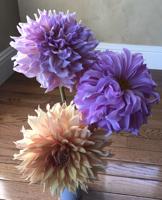
Home-and-garden
Top Story
Why do I love dahlias so much? They are the perfect summer flower blooming in a wide range of forms and colors, from brilliant reds and purples to variegated pinks and lovely whites. They can be the size of a dinner plate or as small as the tiny balls called pom poms, with petals from straight to curly and everything in between.

Home-and-garden
Top Story
In 1999 David Layland planted nine Manzanillo olive trees. Over the years I’ve added another fourteen trees and they are all still alive and producing fruit for olive oil. He says his early success relied more on dumb luck and less on good planning. He’s passing along that knowledge.

Want to grow successful tomatoes in 2023? Master Gardener Cindy Watter provides some useful tips.

Home-and-garden
Top Story
UC Master Gardeners of Napa County’s annual tomato sale, a harbinger of spring is April 15.

Master-gardener
Top Story
Regenerative agriculture is a new term, but the practices go back hundreds of years to indigenous peoples.

Sweet potatoes are one of the most nutritious vegetables you can eat and you can easily grow them in pots on your patio.

Master-gardener
Top Story
Procrastination is rarely one’s friend, but never is this truer than when dealing with weeds, according to Napa County Master Gardener Cindy Watter.

Master-gardener
Top Story
In our mild Napa Valley, you can harvest broccoli most of the year. Of course, you might have to contend with pushback. The spouse of a participant in the recent Master Gardener broccoli trials reportedly asked, “Do we have to eat broccoli every night?”

Millipedes and centipedes are distant cousins from different species, but both are beneficial residents in your garden.

From the mundane to the ambitious, gardening tasks abound after rainy weather. Just bundle up and get started. Your garden will thank you.

Pomegranates are beautiful, and their sparkling fruit reminds us of summer even in the dead of winter. They grow well in Napa County, if you follow these tips.

I recently discovered the bunchberry (Cornus canadensis), a ground-hugging dogwood, and could not resist it. The leaves resemble those on thei…

Now that we’re finally getting some rain, don’t let it fall off your house, down your gutters and into the storm drain. Catch some of it and use it in your garden.

Master-gardener
Top Story
With winter’s official start less than two weeks away, it’s rose pruning time.

A great lesson for all gardeners: stick with plants suited to local conditions. Given climate change, we should also be mindful of a plant’s prospects for long-term success.

Master-gardener
Top Story
Perusing garden books, you can travel the world’s great gardens without leaving your chair, and learn how to make your personal landscape healthier and more sustainable.
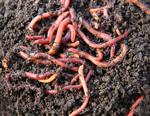
Fall is the time to get your worm compost bins in order.

Master-gardener
Alert Top Story
Urban forests include not only our street trees but also trees planted in gardens and yards, all playing an important role in the health of our community, people and wildlife.
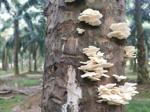
Mycoremediation—using fungi to repair environments—is a new area of mycology (the study of fungus) that shows promise.
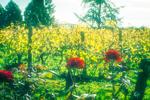
Roses blooming at the end of vine rows in spring and summer is a sight almost as familiar as the winter mustard bloom. But why do grape growers plant them?
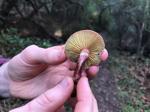
Mushroom hunting is fun, writes Master Gardener Cindy Watter. “Educate yourself and take a guided walk.”

Home-and-garden
Top Story
Here’s a guide to growing Jupiter’s Beard in your garden.
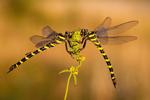
Master-gardener
Top Story
According to the UC Davis Bug Squad, insects contribute an estimated $57 million annually to the U.S. economy, yet many are close to being endangered species. Here’s how to help them.

The main thing is to enjoy your garden. It should be a place for relaxation; don’t worry about everything looking perfect.

Napa County Master Gardener Penny Pawl installed an owl box in her yard, and a mother squirrel decided it was a fine place to raise her kits.

On any given day, air and surface temperatures tend to be higher in urban areas than in surrounding rural settings. This phenomenon is called the heat-island effect.
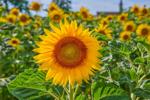
Easy to grow, sunflowers are called the “clever plants” by UC Davis researcher Dr. Stacy Harmer.
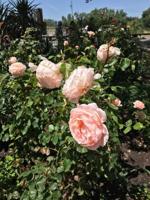
Lessons noted from the gardens at Saintsbury Winery in Carneros.
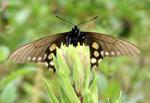
Master Gardener Penny Pawl explores the relationship between the Dutchman’s pipevine, found in Napa, and caterpillars that safely consume the poisonous plant, which in turn makes the butterflies toxic to predators.

Keep your soil covered, the UC Master Gardeners of Napa County say. But what does covering the soil mean? Why do we want to cover it? And with what?
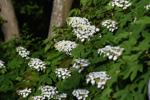
Most hydrangeas are real water gluttons, but the oakleaf hydrangea is not only dramatic and easy to care for, it requires very little water.

Last winter I was pleased to read that a fifth-grade student, Knox Van Emst, had read the entire series of Hardy Boys novels. He made excellen…
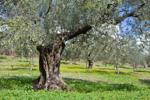
Master-gardener
Top Story
It has been said that olive trees thrive with drought, sun, rocky soil, silence and solitude. They also need a Mediterranean climate. Napa Valley provides it all.
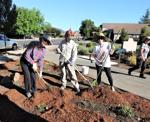
The UC Master Gardeners of Napa County have installed a new learning garden and the community is invited to the opening day on Sunday.

Master-gardener
Top Story
Every gardener has the ability to have a positive and significant influence on the earth’s warming climate. Improving soil by adding organic material like compost helps the life in earth’s over-tilled and compacted soil.

Here’s a useful step by step guide to planting a fruit tree.
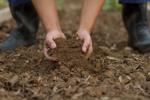
Heal the earth by healing the soil? Are we really able to slow global warming by manipulating dirt?
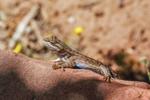
Meet soldier flies, good guys to have in your compost bin.

The Euphorbia family contains more than 2,000 different plants, including perennials, annuals, biannuals and many succulents.

Why bother growing your own lettuce? Because there are so many wonderful types, many of which we never see in stores.
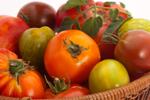
Get ready for summer tomatoes at the Master Gardeners annual sale.
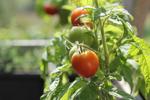
With spring planting on the horizon, the Master Gardeners have some tips for growing tomatoes in containers.
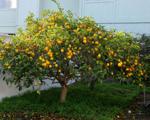
Access to Meyer lemons is a good reason to remain in California, writes Master Gardener Cindy Watter.

There are many flowering trees in Napa’s Fuller Park, and this spring would be a good time to see them in bloom.
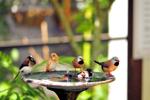
Many gardeners spend a good bit of time trying to protect plants from wildlife, but Susanne von Roseberg feels that your garden and the planet will be enriched by encouraging wildlife to visit your garden.

If we want to reduce or even just stabilize temperatures in this time of rapid climate change, keeping our urban forests intact and thriving is an action we all can take.
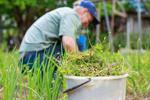
Snails, slugs and weeds: Master Gardeners provides a list of things to think about in your garden in February.
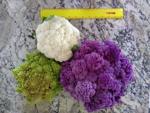
In 2021 the Napa Master Gardeners’ field trials group decided to grow cauliflower, not just once but twice. Here are their results.
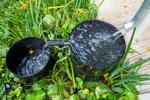
It all started with the water bill. That is how Linda St. Claire, a former UC Master Gardener of Napa County, described her conversion to storing rainwater to use in her garden.

As the new year gets underway, we start dreaming of what our gardens will be like in the spring and summer. Even if it is cold and wet there are things you can start planning and doing.
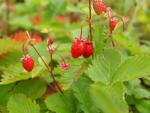
January is a great time of year to plant strawberries in Napa Valley, regardless of online recommendations to plant them in the spring, late summer or early fall.

Wet and cool weather interspersed with warm sunny days, is perfect for fungi and slime mold to complete their life cycles, and they are turning up in gardens in Napa County.
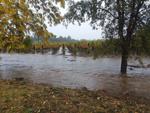
October’s atmospheric river rainfall is likely a preview of what is to come. As gardeners, that means we have to simultaneously be prepared for drought and flood.
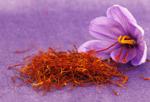
Napa County Master Gardeners explore of the pleasures of gardening, which include planting crops that are relatively easy to grow, yet expensive or hard to find in stores.
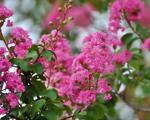
Crape myrtle trees grow well in Napa’s climate and are great to include in a drought-tolerant landscape.
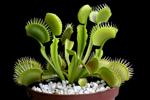
Plants do respond to touch, processes knows as thigmotropism and thigmomorphogenesis.

What trees are best to plant to help with climate change? Master Gardeners of Napa County have suggestions.

Is it really best to buy the biggest tree you can afford? A veteran Master Gardener provides the answer to this and other myths about trees.
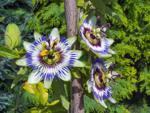
While native plants may be preferable as a butterfly habitat, the passionflower is an exception. Butterflies love them.
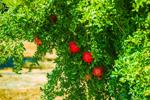
The Napa County Master Gardeners provide a primer for growing your own pomegranates.

Ceanothus, native to California and very drought-tolerant once established, is ideal for Napa Valley gardens.
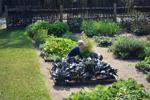
One way to garden during a drought is to try the method of French intensive gardening.

Gardening is a great way to grow food, connect with nature and stay physically active for adults and children. Kids, however, don’t have the same abilities and attention span as adults, so here are tips to keep in mind if you’re gardening with young people or designing a garden for them.
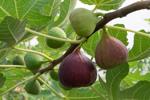
No matter where you live in Napa County, you’ll be able to find a variety of fig tree that’s right for your microclimate.
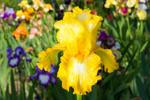
Colorful bearded iris are easy guests in most gardens, and they reproduce rapidly.
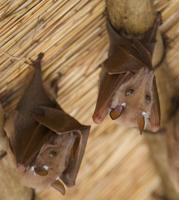
We have bats in Napa County and we should be happy they are here. One bat can eat as many as 3,000 insects in one night.
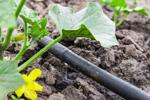
As a good steward of the planet, what can you do to better prepare your garden to use less water?
Cassandra Walker is a UC Master Gardener of Napa County.
Be the first to know
Get local news delivered to your inbox!


